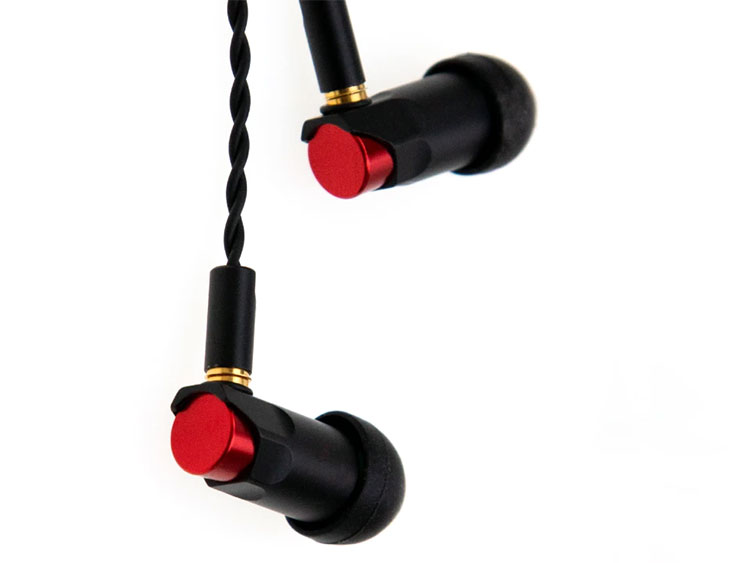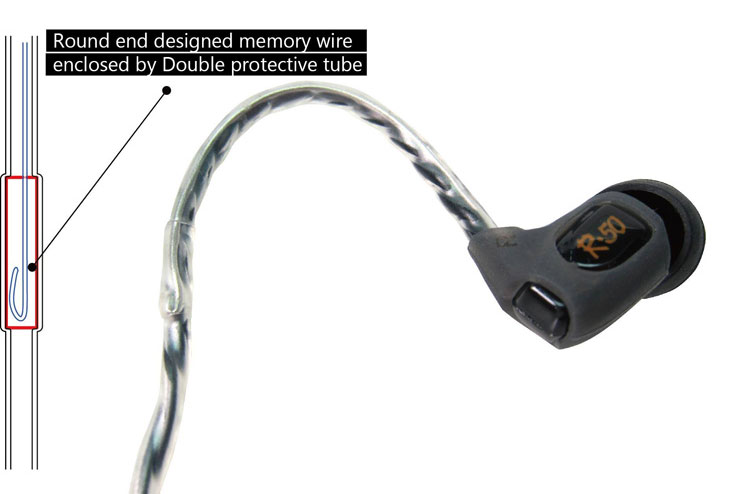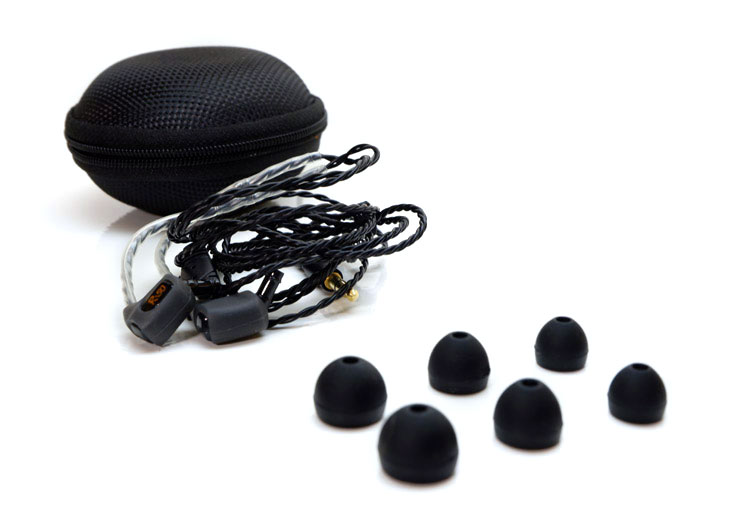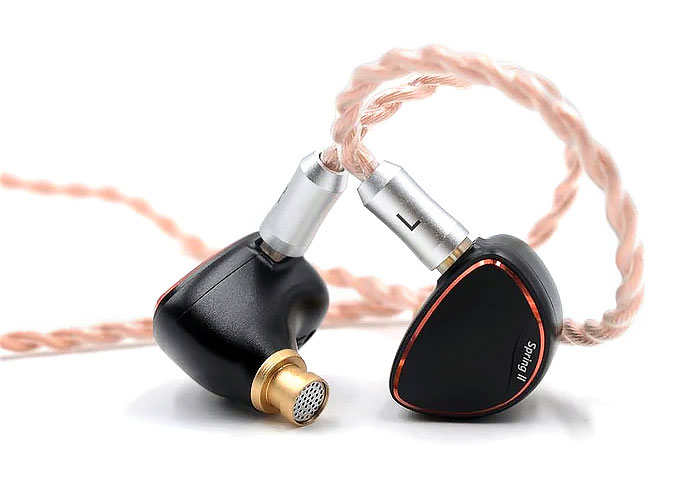The Rock It Sounds R-50 is a dual-balanced armature driver universal IEM and a 2nd gen of the original from 2010. It is priced at $119.99.
Disclaimer: The Rock It Sounds R-50 sent to us is a sample in exchange for our honest opinion in this review. We thank the team at Rock It Sounds for giving us this opportunity.
To read more on Rock It Sounds products we have reviewed on Headfonics click here.
Note, this review follows our new scoring guidelines for 2020 which you can read up on here.
Rock It Sounds is a company that was built with the goal of creating headphones with the clearest sound at affordable prices. They have been in operation out of their offices in Hong Kong and California since 2010.
While their headphones are designed and developed in California. Their headphones and IEMs are priced competitively while being positioned to compete with their German and Japanese counterparts in terms of audio quality, comfort, isolation, and unique appearance.
Their flagship R-50 IEM has been around a while now and we have reviewed their original revision of this back in 2013. This year, Rock It Sounds reached out to us to ask us to review their latest revision of their original R-50, so it will be interesting to see how the R-50 is being kept relevant 7 years after its original release.
Tech Inside
The Rock It Sounds R-50 houses a Dual BA TWFK driver unit from Knowles, which has been in use for quite a while now. This is the same one that was also used in the original R-50.
The biggest improvement of the new R-50 over the original though is the fit and the comfort. Rock It Sounds has added a rounded memory wire with a double protective tube that would ensure that the memory wire would not snag anything or cause any discomfort.
They also stated that they have redesigned the R-50 to have a better fit to improve the bass response.
Design
The R-50 is a non-detachable IEM with memory wire near the shells and braided cables from the shells to the 3.5mm plug. It also comes with a molded rubber Y-split which is not the most beautiful but it does look very robust.
Indication for left and right is a bit hard since it is just vaguely embossed on the silicon protectors on the shells themselves. At the other end is a straight 3.5mm TRS jack, and as far as I know, there’s a mic-version which is the R-50M for voice and playback control compatibility.
Since Rock It Sounds opted to keep most of the design elements of the original R-50 in this new iteration, the design might seem a bit dated.
Clearly absent are the current staples of having removable cables and other accessories. However, with the current form factor of the R-50, it seems impractical to retain the same design with a removable cable. So, I understand why Rock It opted to keep most of the original design elements in this new iteration.
Comfort and Isolation
While the R-50 tended to sound a bit better with foam tips, I found that it’s important to get the perfect fit for the foam tips. Interestingly, the right fit for the tips is usually smaller than on other IEMs, because the R-50 seems to be designed to go deep into your ears.
There are 2 ways to wear the R-50: the memory wire can be curved to follow the back of your ears, or straightened out so that the wire will be straight down.
For me, I preferred to wear the R-50 looped around my ears, as they are more secure and the memory wire starts to feel a bit awkward once it’s straightened out. Once the R-50 is properly inserted in my ears, it feels very secure and exceptionally light so I’m not so worried about them falling off my ears.
Since they are inserted quite deep into my ears, I find that isolation to be excellent. I can’t even hear my own fingers snapping beside my ears so being immersed in the music with the R-50 will be that much more engaging.
Packaging & Accessories
Rock It Sounds has stated that the R-50 comes in 2 kinds of packaging. The first one is their standard retail packaging, which has a standard plastic tray inside the box. This would keep the product protected and would make it look good on the store shelves.
The 2nd option is to have the R-50 shipped with their eco-friendly packaging. This packaging is just a plain brown box with a bit of bubble wrap inside. The latter was sent over to me so I do welcome the environmentally friendly approach from Rock It Sounds.
The R-50’s package comes with just a semi-hard shell zip case and silicon ear tips coming in 3 sizes. Compared to most IEMs that came out this year, this might seem a bit spartan so there may have been a missed opportunity here to diversify and differentiate from the original.
Sound Impressions
Bass
Typical to a lot of early BA IEMs configurations the R-50 are not bass canons. However, contrary to what I expected, the R-50 was able to deliver a bit of punch. The sub-bass on the R-50 starts to drop off at around 50Hz so some sub-bass might seem to have less of an impact.
The mid-bass on the R-50 though is a different story as it is able to retain a nice level of punch while still remaining clear and free of bass bloat.
It was also nice to hear the amount of control that the R-50 can exert over the bass region. Each drum beat and bass note sounds larger than I would expect but it does not sound overly thick and dominant.
I tend to shy away from pure BA IEMs because bass matters to me quite a lot and BAs don’t usually have the texture and depth of dynamic drivers. The R-50 for me has broken that mold.
Of course, the bass on the R-50 does not have the same physical presence as a good dynamic driver but it has a lot more clarity and control. The bass on the R-50 always sounds measured, not shy, but never overstepping into being too much.
Midrange
I find the midrange of the R-50 to be to be detailed and well-controlled. Male vocals tend to be reasonably textured or well-defined. I would have wanted to hear a bit more thickness in the male vocal range, probably because of too much control leaving no room for decay.
The smoothness of female vocals is also presented well, but again, it ends up sounding a bit thin because of the lack of any decay due to a very controlled set of drivers.
The R-50 was able to render guitars and pianos fairly accurately, especially in the upper mid-range region with some above-average instrumental separation and a slightly increased presence in the region.
I would have wanted to hear a bit of an increase at the very top end of the midrange to make higher-key piano notes sparkle a bit more.
Treble
I find that the treble is well-controlled on the R-50. My greatest fear with Balanced Armature-based IEMs is the shrill treble sound some of the older versions had.
This is somewhat alleviated with the R-50 because while the treble region remains very detailed and has an almost crystalline quality, it doesn’t become too bright or shrill. In fact, you could argue it lacks a bit of headroom and air. Still, with treble, I always have a personal preference for a bit less rather than a bit too much.
Staging
The R-50 has a decent amount of stage capability. It will not be so wide as to go beyond the extent of your head, but within your head, the sound stage extends from side to side with a slightly forward center image.
While the soundstage might be just average, I find that imaging is quite accurate with the R-50. My usual test for imaging is Yosi Horikawa’s Bubbles, and I believe that the R-50 was able to render each sound element within the song properly.
Synergy
Sources
The R-50 is rated at 31Ω, with a 110dB Spl. Both numbers seem to indicate that the R-50 would be quite easy to drive. I tested the Rock It Sounds R-50 on my Nokia 7.2, and I was almost maxing out the volume on my phone the whole time I was listening.
It was also quite underwhelming even when I maxed out the volume on my phone, as there wasn’t much bass, and the rest of the frequency range seemed to just become scattered. Nothing good seems to come out of it.
So I decided to try it on my dedicated music player, the Hiby R3 Pro, and it made a world of difference. However, I was surprised that I needed to get to about 50% to 60% on high gain to get to comfortable listening levels.
Everything started to become tighter, the bass, the midrange, and the treble all seemed to be tight and well-controlled. I was still lacking a bit of bass though, as I found myself just looking for the bass punch that was said to be improved because of the better fit of this revised version.
Tips
I then tried out the different silicon ear tips that came with the R-50, and I ended up trying the smallest size of ear tips and it changed the sound by quite a lot.
I found that the R-50 is designed to be inserted deep into my ear canal, to enhance the bass, similar to how Etymotic IEMs are supposed to be properly worn. Properly inserting the R-50 makes a world of difference, so getting the right fit is paramount to fully enjoy it.
The R-50 started to sound even better on some small foam ear tips with a bass that was slightly elevated to make it sound punchier while retaining that important level of control.
Out of the box, it’s important to note that the R-50 will require the use of a dedicated music player. Of course, getting the proper fit is a must. Using a pair of small foam tips will also enhance the R-50’s sound signature. But once these things are done properly, the full potential is unleashed and it really packs a punch.
Select Comparisons
BQEYZ Spring 2
Technical
The BQEYZ Spring 2 offers quite a bit more in terms of accessories. Out of the box, it has a hardshell case, 3 types of extra ear tips, and a thick braided copper cable terminated in 0.78m 2 pin connectors. These are just a few bells and whistles that come with the Spring 2.
With all the accessories though, I still see that the R-50 makes for a better fit when compared to the Spring 2. Although the cable that came with the Spring 2 is more ornate when compared to the one on the R-50, getting the Spring 2 to stay in my ears consistently might require a bit more adjustments when compared to the R-50’s fit.
The Spring 2 has 3 drivers, 1 dynamic driver, 1 Balanced Armature, and 1 9-layer Piezoelectric driver. This might seem to give the Spring 2 an inherent advantage due to driver count, but the sound comparison might be closer than the specs sheet would lead us to believe.
Performance
The bass on the Spring 2 is quite a bit punchier when compared to the R-50 because the bass on the Spring 2 is taken care of by the Dynamic driver. While the bass might be punchier, the presentation isn’t as clean and controlled as the bass that I hear on the R-50.
Midrange clarity is about the same on both IEMs, probably because the mids on the Spring 2 are done by a BA driver. However, the midrange on the Spring 2 is slightly less emphasized when compared to the R-50.
Once we go to the treble region, the Spring 2 seems to sparkle quite a bit more, being able to present more top-end detail compared to the R-50. However, the Piezoelectric driver on the Spring 2 seems to end up a touch too bright if the recording is already quite bright, to begin with.
The width of the soundstage on the Spring 2 seems to reach out beyond my head a bit, probably because the Spring 2 can present air frequencies quite well. While the clarity and the tangibility of the image on both IEMs are almost the same.
On paper, the 3 drivers would have the clear advantage of utilizing the best driver for each frequency range. However, I can say that the R-50 ends up having a more coherent timbre and tonality between the 2.

Cat Ear Mia
Technical
Compared to the R-50’s sparse package, the Mia comes with 2 types of ear tips, a leather case that looks like a coin purse, and the cables on the Mia are removable via MMCX.
At a slightly lower price tag of just $99, the Mia might seem like a better deal because of the accessories and the cable termination. But if the sound is your priority, then the narrative might end up looking a little different.
Form factor-wise, the 2 IEMs are also quite different since the Mia is designed to be shallowly inserted into the ears, while the R-50 must be inserted deep into your ear canal. Also, the Mia can only be worn with the wire straight down while the R-50 can be worn both with ear loops or straight down, although the 2nd option might be slightly awkward.
Performance
The Mia comes with 8mm dynamic drivers, which is a stark contrast to the dual BA driver that the R-50 comes with.
One of my complaints about the R-50 is the roll-off in the sub-bass region, and Mia addresses this quite well with a substantial increase in sub-bass rumble. While the midbass on the Mia might have a bit more punch, it’s immediately apparent that the BAs in the R-50 have much more control of the mid-bass region.
The midrange on the R-50 seems to be slightly more elevated when compared to the Mia, but the Mia seems to be able to accentuate the midrange with some pleasant decays. Finally, the treble on both IEMs is about the same, but the control and clarity of the R-50 are more impressive.
Our Verdict
The accessories, packaging, and overall look of the R-50 have not changed since they were first released. This might make the R-50 look a bit outdated in 2020 with the plethora of modern lavish presentations, even at the budget level.
However, there are quite a few other classic headphones that have not changed much since they were initially released such as the Sennheiser HD600 or the Koss Porta Pro and they are just as well received today as when they first came out.
Typically, what I expect of a purely BA-based IEM is that it would be thin in the lower frequencies and slightly shrill in the highs. Rock It Sounds was able to avoid this by elevating the bass to make it slightly punchier while retaining clarity. At the same time, they trimmed down the treble a bit to prevent it from being too bright.
In short, Rock It Sounds was able to make the best of the Balanced Armature’s clarity while being able to mitigate most of the drawbacks of having a pure BA design. Sure, it comes in a simple package that might seem a bit dated, but the ability to accurately create enjoyable music is just as relevant today as when it was first released.
Rock It Sounds R-50 Specifications
- Driver unit: Dual Micro Balanced Armature
- Impedance : 31Ω @ 1kHz
- Sensitivity: 110dB
- Frequency Response: 20-20kHz








